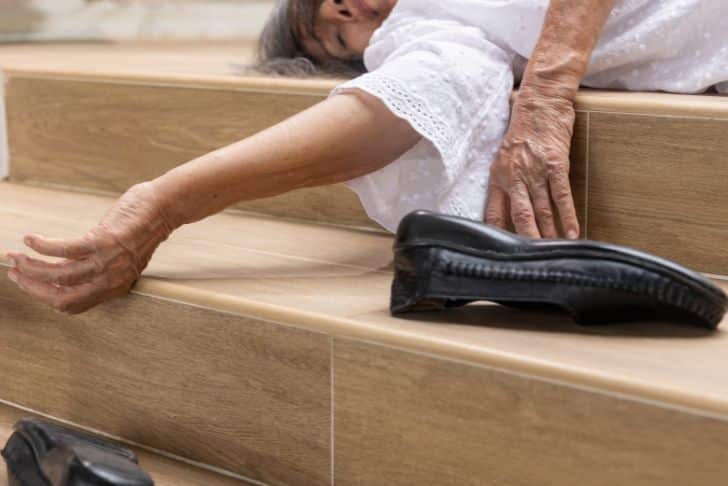Older adults are living vibrant, active lives, but with this comes an increased risk of falls leading to injuries, or in severe cases, death. This escalating issue, however, doesn’t have to be an inevitable part of aging. In “Understanding and Preventing Older Adult Falls,” the concerns of older adults and loved ones are addressed, providing effective strategies to minimize fall risks. The article highlights that adults aged 65 and over have recorded over 36,000 fatal falls and 3 million visits to accident and emergency per year, costing an astounding $50 billion in medical costs annually. This vital information provides insights into the scale of the problem, while offering suggestions for preventative measures you can take, whether for yourself or a family member at risk of falls. Here’s to empowering older adults to safely enjoy their golden years, one step at a time.

Understanding the Risk of Falls in Older Adults
As you age, your risk of falls significantly increases. This is due to a multitude of intertwined factors that impact your balance, mobility and overall health. It’s important to be aware of these risk factors as most falls are preventable.
Determining factors contributing to fall risk
There are various underlying reasons that increase fall risk in older adults. These can largely be identified as physical, environmental or medical conditions. Physical factors include weakness in the lower body, balance issues and difficulties in walking. Environmental factors involve hazards at home such as clutter, poor lighting, and slippery floors. Finally, certain medical conditions and medications can also contribute to a higher likelihood of falls.
Effects of aging on balance and mobility
Aging can significantly impact your balance and mobility. Changes in muscle strength, joint flexibility, sense of balance and reaction time all increase your likelihood of a fall. For example, as you age, your muscles begin to shrink in size and lose their strength, making it harder to keep your balance.
Medical conditions that increase fall risk
There are several medical conditions which make you more prone to falls. Chronic conditions like heart disease, arthritis, and diabetes may cause physical limitations that increase fall risk. Neurological conditions such as Parkinson’s disease, multiple sclerosis and dementia can cause balance issues, cognitive impairment and reduction in strength.
Statistics on Older Adult Falls
Falls in older adults represent a significant public health concern. Understanding the data and statistics related to falls is crucial in recognizing their impact and formulating strategies for prevention.
Current data on falls within older adult population
According to the Centers for Disease Control and Prevention, falls are the leading cause of injury and death among older adults. In 2020, over 36,000 deaths in older adults were due to falls. Furthermore, emergency departments recorded three million visits for older adult falls within the same year.
Correlation between age and risk of falls
The risk of falls increases significantly with age. The reason for this is mainly related to physiological changes associated with aging, such as decreased strength and balance, altered gait, and slower reaction time. Other contributing factors include medical conditions, sensory impairments, and certain medications.
Impact of falls on healthcare costs
The financial burden of falls on the healthcare system is profound. Older adult falls cost around $50 billion in medical costs annually. The majority of these costs were paid by Medicare and Medicaid, indicating that falls greatly affect healthcare resources and expenditure.
Potential Consequences of Older Adult Falls
Falls can have severe and life-altering consequences for older adults. Understanding the potential repercussions can motivate you to take active steps towards fall prevention.
Physical injuries due to falls
Falls can lead to various physical injuries, ranging from minor bruises and scrapes to more serious impairments like fractures and head injuries. The most common types of fractures include wrist, arm, ankle and hip fractures.
Psychological impacts of falls
The psychological impacts of falls can be equally damaging. Fear of falling can lead to anxiety and depression, reduced physical activity, and social isolation. This can result in a vicious cycle, where fear of falling and subsequent inactivity lead to physical decline, increasing the risk of future falls.
Long-term effects on independence and quality of life
Falls can significantly impact your independence, making it harder for you to perform your daily activities and routines. This can lead to a reduced quality of life and may necessitate additional care or even a move to an assisted living facility.
Preventing Falls in Older Adults
Preventing falls in older adults is achievable with a multifaceted approach involving individual strategies, professional healthcare input and regular health assessments.
Strategies for individual fall prevention
As an individual, there are several strategies you can adopt to prevent falls. These include staying active to maintain strength and balance, having regular vision and hearing checks, and making your home safer by removing fall hazards.
Role of healthcare professionals in fall prevention
Healthcare professionals play a critical role in fall prevention. They can assess your risk of falling, review your medications, suggest appropriate exercises, and offer guidance on assistive devices.
Importance of regular health checks
Regular health checks are vital for detecting any changes in your health status that may increase your risk of falls. These checks should include a review of your medical conditions, examination of your physical and cognitive function, and an assessment of your home environment.

Creating a Safe Home Environment
Creating a safe home environment is a key element in fall prevention. By modifying your surroundings and using assistive devices, you can substantially reduce your risk of falls.
Home improvement tips to prevent falls
Consider safety tips such as installing grab bars in the bathroom, using non-slip mats, keeping the home well-lit, and removing floor clutter. It’s also recommended to ensure that carpets are secured and footwear is sturdy and non-slip.
Adaptive and assistive devices
Adaptive devices like shower seats, elevated toilet seats, and hand-held showerheads can help with safety in the bathroom. Assistive devices like canes or walkers can also provide additional support for mobility.
Optimizing lighting and eliminating fall hazards at home
Good lighting is essential to safety, particularly in high-risk areas such as staircases and bathrooms. Eliminate possibilities for tripping by keeping hallways and stairways clear, and ensure that wires and cords are well managed.
Role of Exercise in Fall Prevention
Regular physical activity is paramount to preventing falls. Exercise improves strength, flexibility, balance, and coordination, all which can protect against falls.
Benefits of physical activity for balance and strength
Physically active older adults have a lower risk of falling. Regular exercise helps maintain and improve muscle strength, agility, and flexibility, and can enhance coordination and balance.
Recommended exercises for older adults
Strength training combined with balance exercises can significantly reduce the risk of falls. Activities like Tai Chi, yoga, and water aerobics can be particularly beneficial. Always consult with a healthcare professional before starting a new exercise program.
Safety precautions for exercise
It’s important to take safety precautions when exercising. This may involve using supportive equipment, warming up before exercising, staying hydrated, and pacing your workouts according to your ability.

Medication Impact on Fall Risk
Certain medications can increase your risk of falls by causing side effects such as dizziness, confusion, or drowsiness.
How certain medications increase fall risk
Medications including sedatives, tranquilizers, and some types of antidepressants are known to increase fall risk. They can affect balance and coordination, and can cause blood pressure to drop, leading to lightheadedness or fainting.
Managing medications to reduce fall risk
It’s important to manage your medications effectively to reduce your fall risk. This may involve regular reviews with your healthcare provider, understanding the side effects of your medications, and using medication aids to ensure correct dosage and timing.
Importance of regular medication reviews in fall prevention
Regular medication reviews with your healthcare provider can help to identify any drugs that may increase your risk of falls. These reviews can also ensure that the benefits of the drug outweigh the risks.
Nutritional Impact on Fall Risk
Nutrition plays a crucial role in maintaining strength and balance. A balanced diet and adequate hydration can significantly reduce the risk of falls in older adults.
Nutrient deficiencies that increase fall risk
Certain nutrient deficiencies can increase the risk of falls. For instance, calcium and vitamin D deficiencies can affect bone strength, making falls more likely and fractures more serious.
Importance of a balanced diet in aged care
A balanced diet can help to maintain overall health, including muscle strength and bone health. Meals should include a variety of fruits, vegetables, lean proteins, whole grains and dairy or dairy substitutes.
Hydration and its role in preventing falls
Proper hydration is essential to prevent falls. Dehydration can lead to confusion, dizziness, and low blood pressure, all of which can increase the likelihood of a fall.
Role of Family and Caregivers in Preventing Falls
Family and caregivers play a crucial role in preventing falls in older adults. They can help to create a safe environment, provide assistance, and communicate with healthcare providers.
Educating caregivers about fall risks
Caregivers should be informed about the risk factors for falls and measures to prevent them. They can play a key role in ensuring safety measures are in place, providing assistance with daily activities, and monitoring for signs of an increased risk of falling.
How to offer supportive care without compromising independence
Supportive care should be balanced with the older adult’s need for independence. This can be achieved by promoting self-care where possible, while providing assistance with tasks that carry a higher risk of falls.
Communicating with healthcare providers about falls
Caregivers and family members are often the link between the older adult and their healthcare provider. They can communicate observed changes, convey concerns, and participate in strategic planning for fall prevention.
Medical Interventions to Prevent Falls
Aside from personal and environmental precautions, there are medical interventions that can help to mitigate the risk of falls in older adults.
Physical Therapy
Physical therapy can significantly reduce the risk of falls by improving strength, balance, and mobility. A customised therapy plan can target specific areas of weakness, aim to improve posture and gait, and teach safe ways to perform daily activities.
Occupational Therapy
Occupational therapy helps older adults to perform daily activities safely and efficiently. This can include teaching strategies for fall prevention, suggesting home modifications, and recommending assistive devices.
Medication adjustments
Medication reviews and adjustments can help to minimise the adverse effects of certain drugs that increase the risk of falls. This can involve reducing the dosage, switching to a different medication, or discontinuing it altogether.
Surgery and other medical procedures
In some cases, surgical procedures may be necessary to reduce the risk of falls. This could include cataract surgery to improve vision, or a joint replacement surgery to enhance mobility and relieve pain.
Falls in older adults are a significant health concern, but the majority of falls are preventable. Whether you are an older adult, a caregiver, or a healthcare professional, understanding the risks, potential impacts, and prevention strategies can help to ensure safety and maintain a good quality of life.
